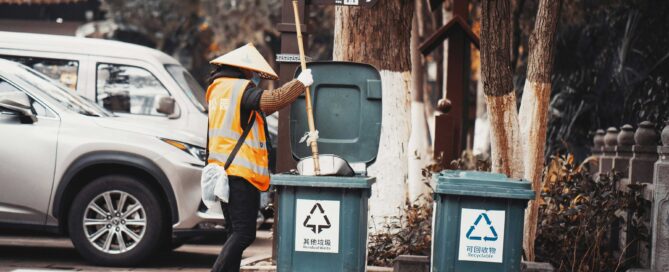Hyaluron in natural cosmetics – The power of hyaluronic acid for radiant skin
Hyaluron: The natural moisturizer in natural cosmetics Nowadays, more and more people are turning to sustainable skincare products that are both effective and environmentally friendly. One ingredient that is particularly prominent in natural cosmetics is hyaluronic acid. This natural moisturizer supports a plump, fresh complexion and is an essential ingredient in many skincare products. But what exactly is hyaluronic acid, how does it work and why should it be part of your daily skincare routine? In this article, you will learn everything you need to know about hyaluron in natural cosmetics. What is hyaluronic acid? Hyaluronic acid is a naturally occurring molecule found mainly in the skin, joints and eyes. It has an outstanding ability to bind moisture: A single gram of hyaluronic acid can store up to six liters of water. This property makes it one of the best active ingredients against dry skin and wrinkles. However, with increasing age, the body produces less hyaluron, which leads to a loss of moisture and the first wrinkles. Products with hyaluronic acid compensate for this loss and provide the skin with intensive moisture - one reason why hyaluronic acid is so highly valued in natural cosmetics. Sustainable origin of hyaluronic acid Hyaluronic acid in natural cosmetics is produced using biotechnological processes, usually via the fermentation of plant-based raw materials. This vegan and sustainable method makes it possible to dispense with animal ingredients and protect the environment. Natural cosmetic products with hyaluronic acid are therefore ideal for anyone who wants environmentally conscious and ethically safe cosmetics. Another advantage: natural cosmetics often do not contain synthetic additives such as parabens, silicones and artificial fragrances, which makes them particularly well tolerated by sensitive skin. The benefits of hyaluronic acid in natural cosmetics Hyaluronic acid is a true all-rounder in skin care and is particularly effective in combination with other natural ingredients such as aloe vera, jojoba oil or shea butter. Here are the most important benefits of hyaluronic acid for your skin: 1. intensive hydration Hyaluronic acid binds moisture and ensures long-lasting hydration, leaving the skin plump and supple. This is particularly beneficial for dry skin, as feelings of tightness and flakiness are reduced. 2. anti-ageing effect Hyaluronic acid visibly reduces wrinkles and fine lines by supporting the skin's natural collagen production. The skin becomes more elastic and firmer, which is particularly beneficial for mature skin. 3. soothing and anti-inflammatory properties Hyaluronic acid soothes sensitive and irritated skin and reduces redness and irritation thanks to its anti-inflammatory effect. 4. Suitable for all skin types Hyaluronic acid leaves no oily residue and does not clog pores, making it suitable for all skin types - from oily to dry to combination skin. Hyaluronic acid in your daily skincare routine Hyaluron can be easily integrated into any skincare routine. Hyaluronic serums and creams that can be used in the morning and evening are particularly popular. In the morning: Use a light hyaluronic serum or cream that is quickly absorbed and provides moisture throughout the day. Also ideal [...]















